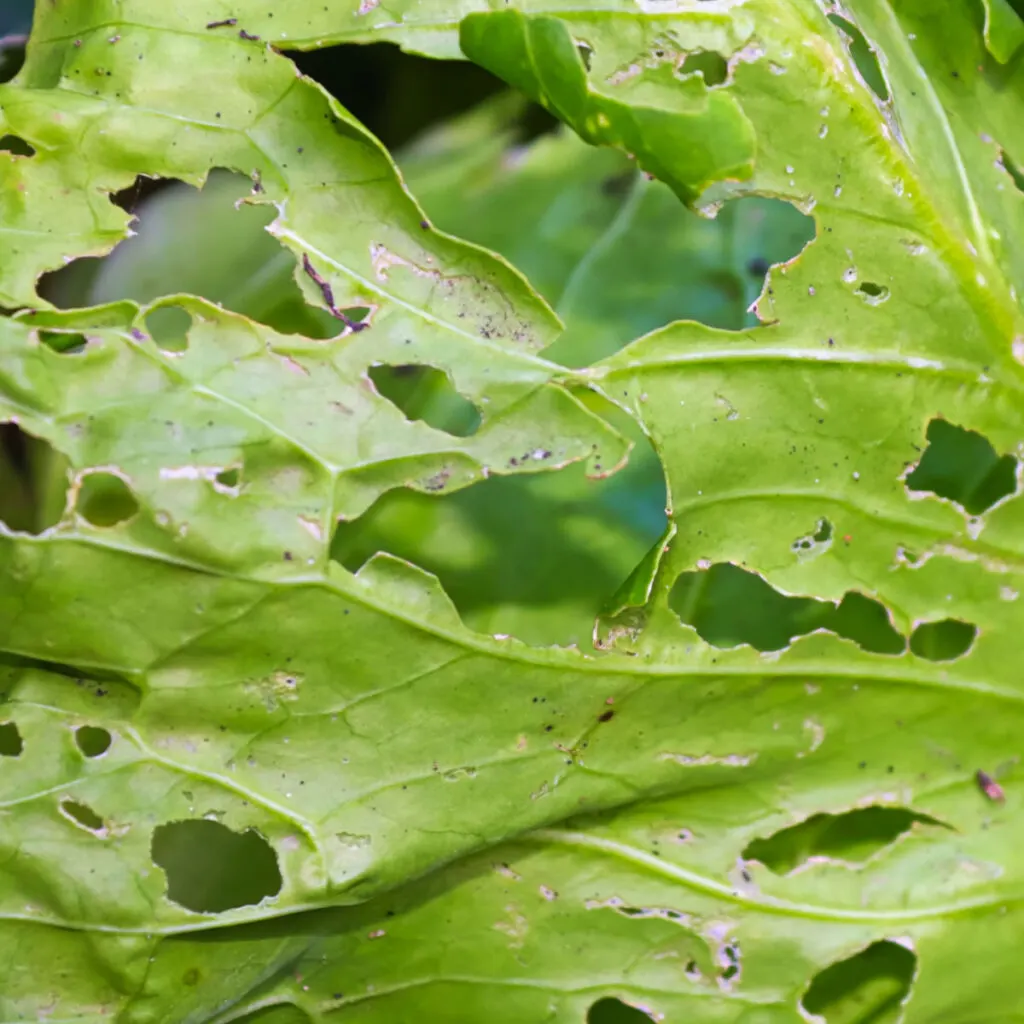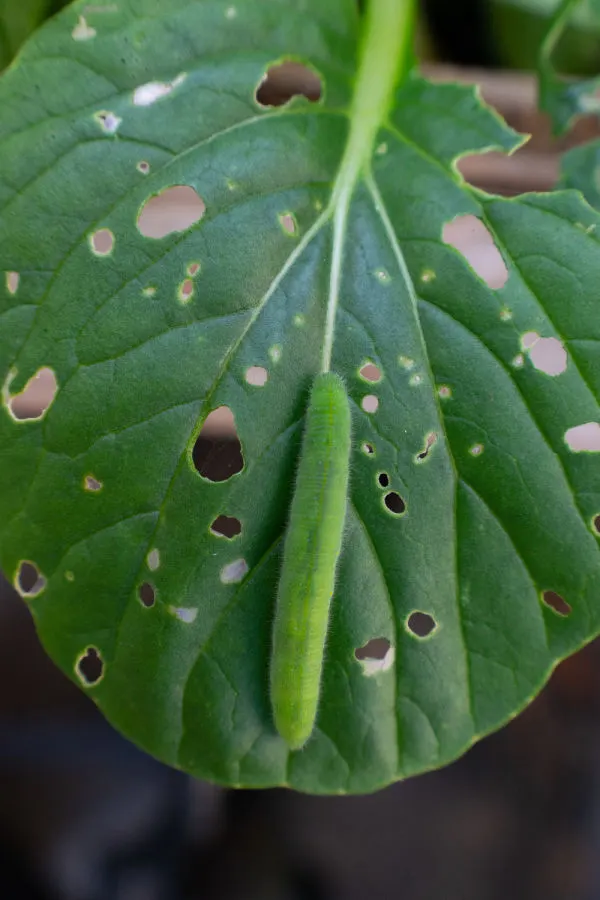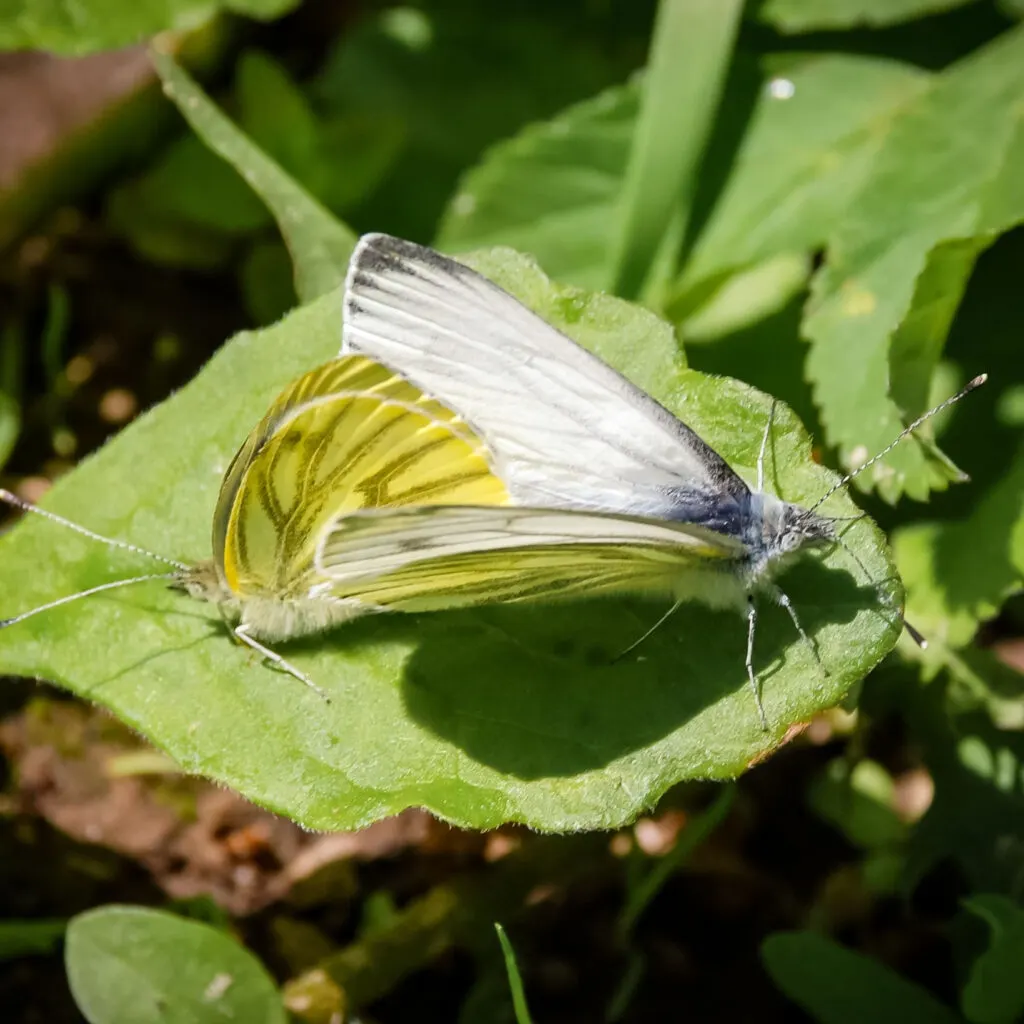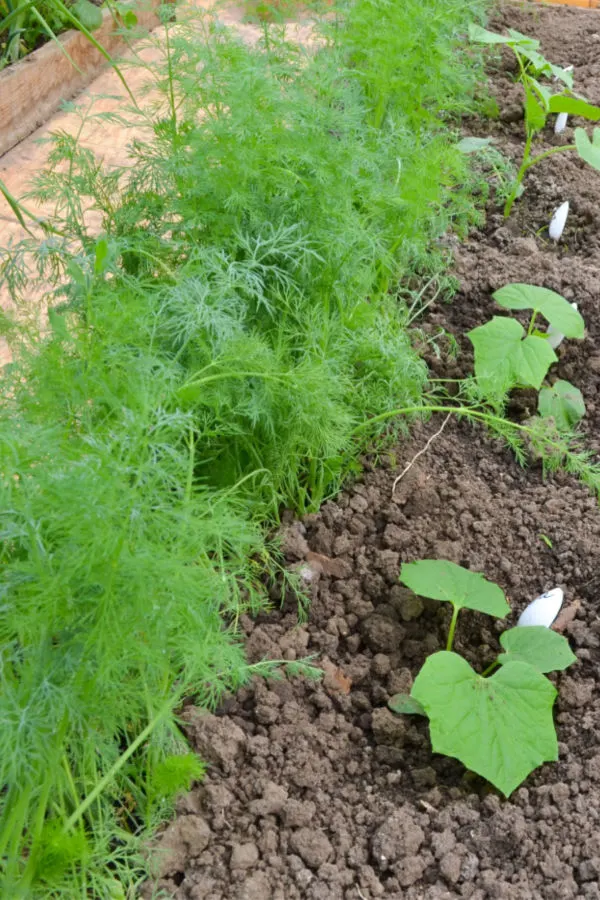Looking for a few great methods to get rid of cabbage moths, cabbage worms and cabbage loopers from your garden – or how to prevent them from getting to your plants in the first place?
Anyone who has ever grown leafy vegetables, cabbage, broccoli, spinach or cauliflower knows the damage cabbage moths, worms and loopers can do. They can all wreak havoc on plants – and in quick fashion.
The secret to battling these garden destroyers successfully all starts with being able to identify which of the 3 cabbage pest varieties you might be dealing with – and then putting a plan in motion to eliminate the ones that are present, and keep any future visits from ever occurring.

The Difference Between The “Cabbage” Pests – How To Get Rid Of Cabbage Moths, Worms & Loopers
Cabbage worms are actually the larva that hatch from eggs laid by the adult cabbage moth. If you see small, zig-zagging white or yellowish butterflies floating around your garden with black spots – you have cabbage moths.
Cabbage moths are in the garden for one reason and one reason only – to lay their eggs. The moths themselves do not actually cause any damage to plants – but the eggs they lay do. And in a very big way!
The cabbage moth lay their eggs sometime in late May to mid to late June. They usually lay their eggs on the undersides of cabbage, broccoli and cauliflower plants, or even greens. After about ten to twelve days, those eggs hatch into small greenish worms, which are known as cabbage worms – and do they ever have a big appetite!
Once they hatch on plants, cabbage worms begin devouring its foliage almost immediately. Before you know it, the plant’s leaves are covered with Swiss cheese-like holes. Not only does it leave the plants looking unsightly, it takes a major toll on its growth and health.
From there, and as they become larger, they can bore directly into the vegetables, completely ruining a crop. Unfortunately, if the infestation is severe enough, it can completely kill your plants off.

This is especially true for smaller plants and tender greens. But even if the plant survives, the resulting harvest can be anything but appetizing and is often entirely ruined from the damage.
Cabbage Loopers – How To Get Rid of Cabbage Moths, Worms & Loopers
Cabbage loopers on the other hand are more of a caterpillar. Unlike cabbage worm, they do not have a middle set of legs, so they move up and down on plants like inch worms to move about.
Cabbage loopers also come from eggs laid on plants from a moth. They can cause a lot of damage quickly, and unfortunately, will attack nearly all garden plants.
So is it possible to protect your crop from a cabbage moths, worm or looper invasion? The answer is yes – especially if you take a proactive approach. There are actually several ways to eliminate all of these pests once you spot them. Even better, there are also some excellent methods to prevent them from ever getting to your plants in the first place!
With that in mind, here is a look at how to protect your garden space this year from all three cabbage pests – and best of all, do it naturally – without having to worry about spraying questionable insecticides on the very produce you wish to consume!

How To Get Rid Of Cabbage Worms, Moths and Loopers
There are several ways to protect your crop naturally. The first key, as with controlling any and all garden pests and issues, is to walk through your garden on a daily basis to notice and head off attacks before they have become a major problem.
Early detection really is the key to gaining the upper hand on pests. If you can stop the issue early, you can minimize damage. In addition, the natural remedies below also work far better when the problem has not multiplied out of control.
If you stay diligent in walking through your garden on a regular basis – most issues can be solved with the very first method on today’s list – hand picking. It sounds so simple because it is. In most cases, dealing with just a few cabbage moths, worms or loopers can easily be controlled by simply picking the pests off plants and disposing of them.
Hand Picking – How To Get Rid Of Cabbage Worms, Moths & Loopers
Although it can be a bit labor intensive, walking rows daily and removing worms / loopers by hand really does work! And even better, if you see those dreaded white moths floating around in late May or June, disposing of them will eliminate the eggs being laid in the first place.

It only takes a few minutes, but walking rows and removing the pests that are present can keep a small problem from quickly becoming an epidemic. Always be sure to inspect leaves for eggs. Remember, you have 10 to 12 days to remove the eggs before they hatch and become an issue.
As for the moths – we keep an old tennis racket in our garden. The moths are fast and zig-zag like crazy, but the tennis racket comes in handy for knocking them down and out. Remember, if you eliminate the moths, you eliminate the eggs and future worms!
Flour / Cornmeal – How To Get Rid Of Cabbage Moths, Worms & Loopers
One of the most effective ways to eliminate cabbage worms and loopers is with flour or cornmeal. To use, simply dust plants with a light coating of flour or cornmeal. The worms like the food source, but it will kill them after eating. They are, of course, entirely safe for you and your plants.
The key to using this method is to reapply anytime the flour or cornmeal gets wet. Once wet, it washes from the leaves and also loses its effectiveness for the worms to ingest it.
Row Covers – How To Get Rid Of Cabbage Moths, Worms & Loopers
Utilizing row covers in your garden is probably the most effective way to control damage from the outset. Row covers eliminate the ability for the moths to ever lay eggs on your plants. This keeps larvae and subsequent moths at bay. Although they are a small investment, you can reuse them year after year.
You can usually get a 50′ x 6′ or 10′ wide row cover for around $20 to $30. They also double when needed for frost protection. The key to success with row covers is to get them on before the moths show up! Product Affiliate Link: 10 ft x 30 ft Floating Row Cover Garden Fabric Plant Cover

Place row covers on young plants the first few weeks after planting, before the moths begin showing up in the early summer months. Once the threat of the moths visiting passes, you can remove the covers for the remainder of the summer. You can do this safely in most regions in the second to third weed of July.
Companion Planting – How To Get Rid of Cabbage Moths, Worms & Loopers
Planting repelling herbs in your cabbage and cauliflower rows can be a big help in keeping cabbage pests at bay. Thyme is well-known as one of the best for naturally repelling cabbage worms. How To Use Companion Planting To Grow A Better Garden
In addition, dill and the mint family of herbs are also excellent repellents as well. Be careful with mint, it can be extremely invasive, so it’s best to have it in pots placed throughout your cabbage, broccoli and cauliflower rows.
Here is to keeping cabbage moths and the damage they bring to your plants to a minimum! Happy Gardening – Jim and Mary.
Jim and Mary Competti have been writing gardening, DIY and recipe articles and books for over 15 years from their 46 acre Ohio farm. The two are frequent speakers on all things gardening and love to travel in their spare time.
As always, feel free to email us at thefarm@owgarden.com with comments, questions, or to simply say hello! You can sign up for our free email list in the subscribe now box in the middle of this article. Follow us on Facebook here : OWG Facebook. This article may contain affiliate links.
